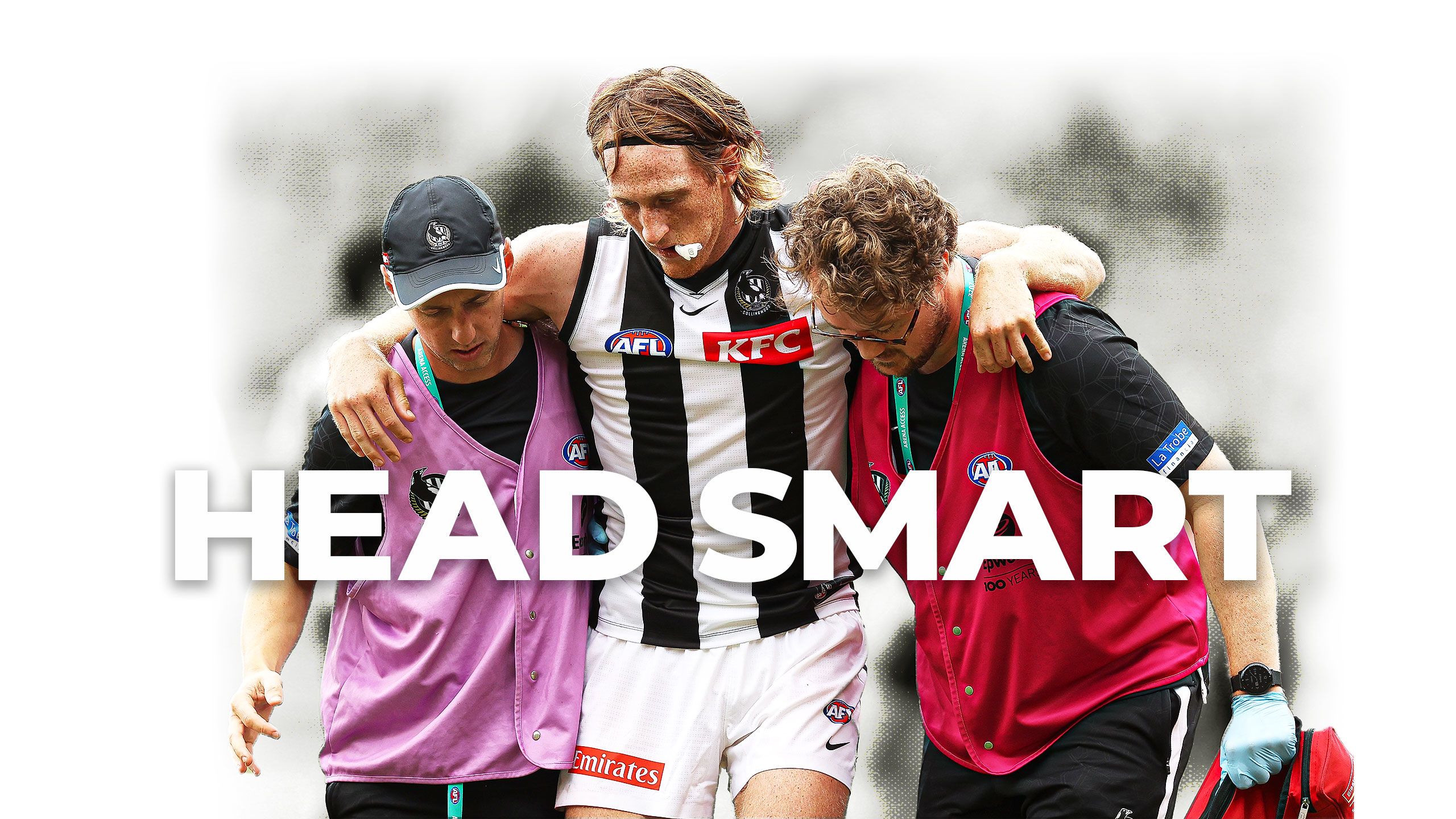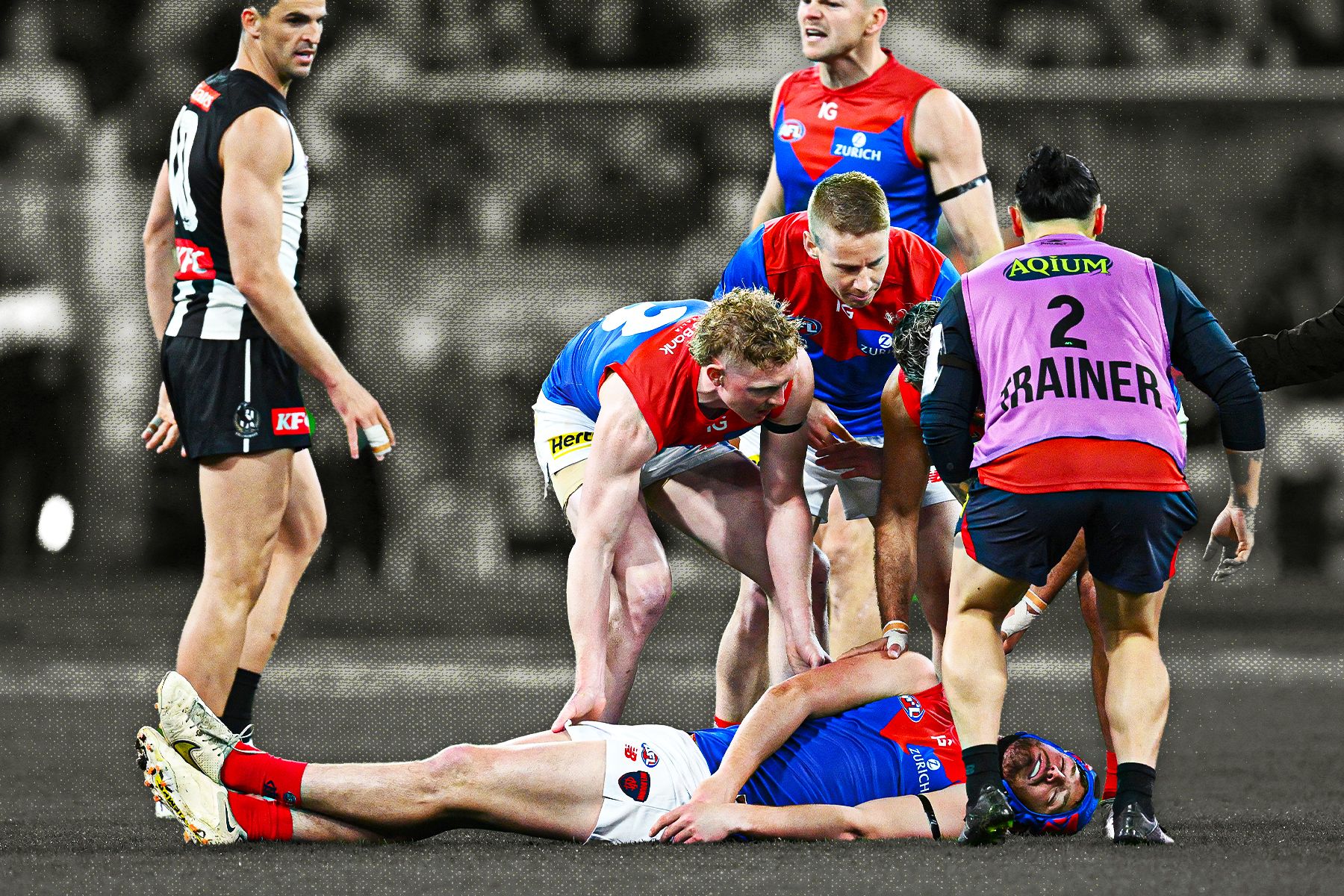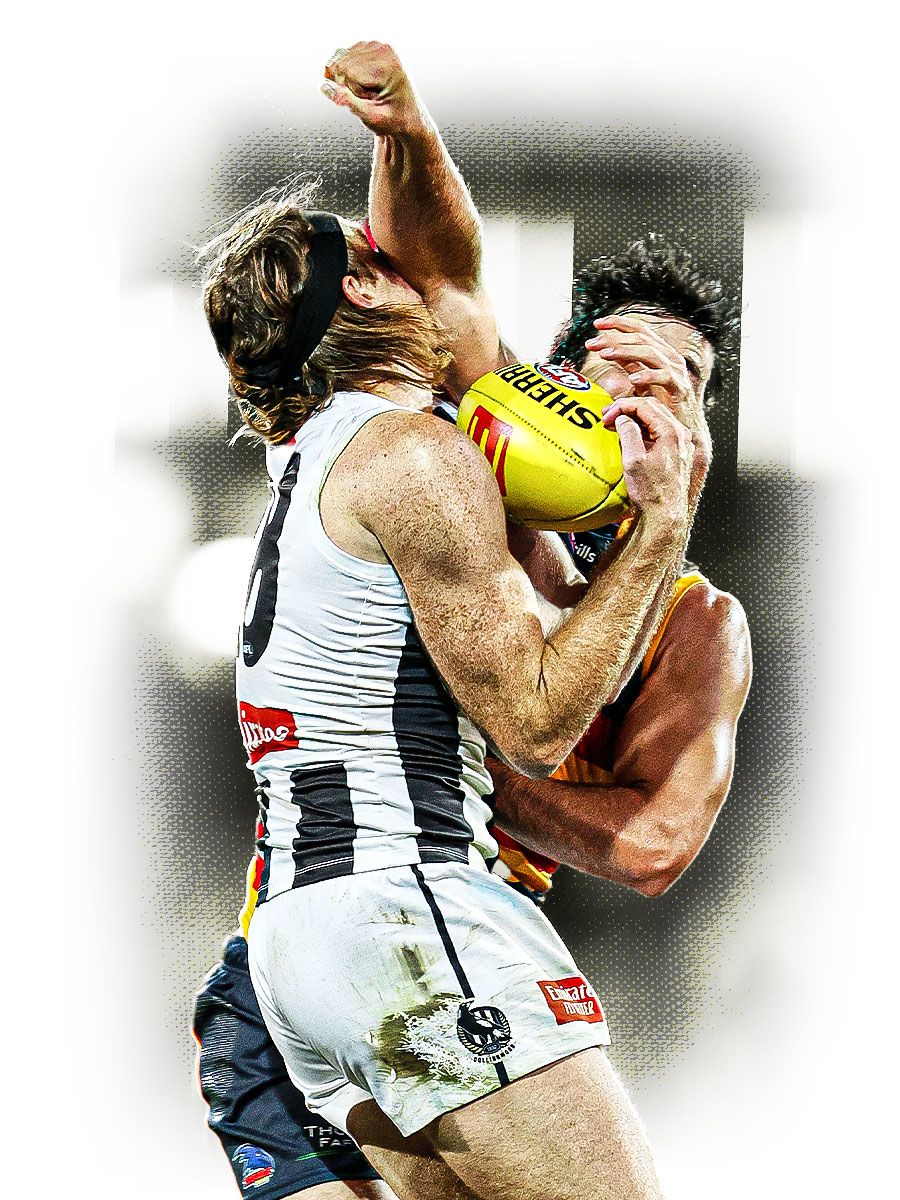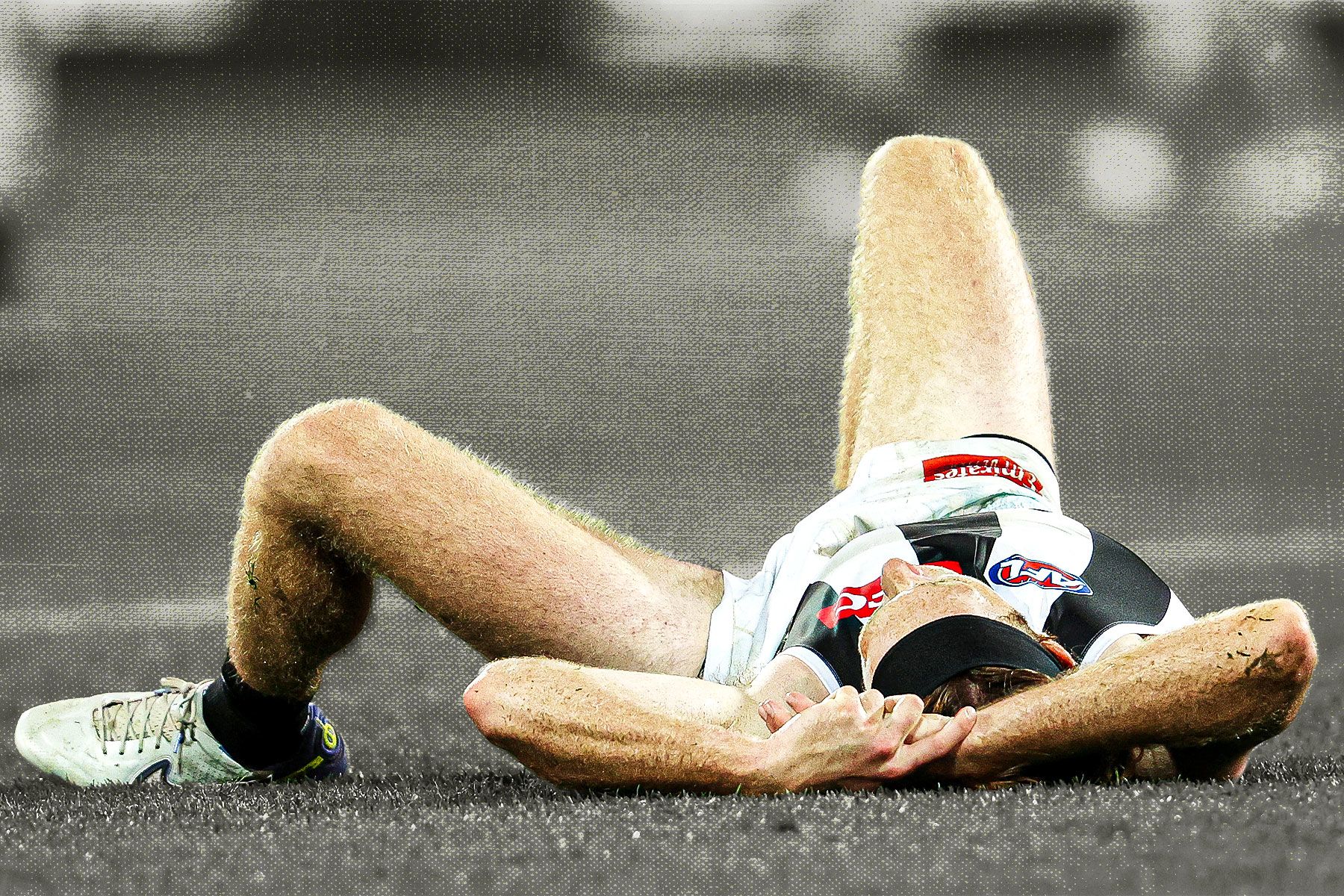
Are 2 mid-career AFL retirements a sign Australian athletes are taking brain health more seriously?
Dr Stephen Townsend
School of Human Movement and Nutrition Sciences
The University of Queensland
Professor Alan Pearce
School of Allied Heath, Human Services and Sport
La Trobe University
Collingwood AFL player Nathan Murphy (pictured above) announced his retirement last month, brought on by his concussion history and ongoing issues.
The 24-year-old’s seemingly sudden retirement, following Angus Brayshaw’s in February and a number of other high-profile footballers in recent years, signals a shift in how athletes view brain trauma risks in sport.
Rather than downplaying or ignoring the potential damage being done to their health by a career filled with brain trauma, some athletes are now choosing to end their careers early. In doing so, they hope to avoid the neurodegenerative diseases which afflicted former players like Danny Frawley, Paul Green, Heather Anderson, and Shane Tuck.

Melbourne Demons star Angus Brayshaw was knocked out during the first quarter of of 2023 Qualifying Final against Collingwood at the MCG. It would be Brayshaw's final AFL match before announcing his retirement due to concussion issues. Image: Quinn Rooney/Getty Images
Melbourne Demons star Angus Brayshaw was knocked out during the first quarter of of 2023 Qualifying Final against Collingwood at the MCG. It would be Brayshaw's final AFL match before announcing his retirement due to concussion issues. Image: Quinn Rooney/Getty Images
Why do athletes risk their brains?
Murphy’s retirement is a sign that concussion culture in the AFL is beginning to shift.
Although the long-term implications of multiple concussions and repetitive neurotrauma have been recognised internationally for nearly a century, scientific and health knowledge has historically battled against a warrior culture in contact sport communities.
For decades, sports have fostered a win-at-all-costs culture, with a pseudo-military flavour of sacrifice and duty to one’s teammates.
This has given rise to athletes ignoring or downplaying injuries whenever possible to continue the game.
This behaviour is particularly easy to enact when it comes to concussion, because it is often an invisible injury with health effects that may not manifest until after the initial contact.
Compounding this are expectations from spectators and fans, many of whom expect their heroes to “run through walls” and not show any weakness or vulnerabilities.
Media commentators also celebrate athletes who return to the field after sickening collisions as “courageous”, having “no fear”, or “gaining respect from teammates and opposition”.
There have been public calls since at least 2016 for commentators to change to the language around concussion.
Watch the video
A shift in attitude?
To prioritise athlete welfare, outdated attitudes need to change across Australia’s multiple contact sporting codes.
Murphy’s retirement and acknowledgement of his long-term brain health is one sign the culture of valorising injury and risk may be changing. But there is other evidence of a shift.

Former Collingwood defender Nathan Murphy collides with Adelaide Crows player Darcy Fogarty in 2023. Image: Sarah Reed/AFL Photos via Getty Images
Australian research shows risky attitudes and behaviours toward concussion have begun to dissipate over recent years.
In 2017, the first study of concussion attitudes and behaviours in Australian athletes at all levels showed that despite participants knowing the dangers of concussion, many would still choose to play through or hide concussions.
Others revealed that even if diagnosed with a concussion, they would not complete full rehabilitation in the hopes of returning to the field sooner.
However, a 2021 follow-up study, using the same survey in a separate group, showed significant improvements towards concussion. Respondents were much less likely to hide or play through a concussion, and were more likely to complete full rehabilitation before returning to competition.
This data indicates that athletes are not only more aware of the potential long-term health effects of brain injuries, but are more likely to heed medical advice if they are concussed.
Murphy’s retirement is an example of footballers’ increased willingness to listen to medical advice. His decision was informed by the findings of the AFL’s independent panel of medical experts, which was introduced in 2019 to provide players with advice about whether to continue their careers following brain trauma.
In his announcement, Murphy said he accepted the panel’s advice, something we hope to see more of in future.
It should also be noted that in October 2023, this advisory panel permitted Murphy to return to training after the athlete was knocked out during September’s AFL Grand Final.
This short turnaround indicates the line between safety and danger for athletes’ brains is razor thin, and that athletes, their families, and medical experts like those who advised Murphy have a complex job ahead of them, as more and more athletes contemplate their futures post-concussion.

Former Collingwood defender Nathan Murphy collides with Adelaide Crows player Darcy Fogarty in 2023. Image: Sarah Reed/AFL Photos via Getty Images
Former Collingwood defender Nathan Murphy collides with Adelaide Crows player Darcy Fogarty in 2023. Image: Sarah Reed/AFL Photos via Getty Images

Nathan Murphy after a head knock against Adelaide in 2023. Image: Sarah Reed/AFL Photos via Getty Images
Nathan Murphy after a head knock against Adelaide in 2023. Image: Sarah Reed/AFL Photos via Getty Images
Are more retirements to come?
With continued discussion, debate and independent research, it is plausible more players with multiple concussions will prioritise their long-term brain health.
Similarly, new draftees entering professional levels of these sports will need to consider the benefits of competing where multiple brain injuries are likely to occur, versus the risk for cognitive impairments later in life or even brain disease.
In the meantime, the current group of athletes – professionals and amateurs alike – must weigh up the costs of participation in high contact games.
The recent and tragic deaths of former professionals and many unknown people who played club football, have shown our expectations of athletes need to be tempered. We need to understand these athletes are not machines, but individuals with families who are doing a job as best they can, for the short period of opportunity they have.
We must continue to educate and change the culture around concussion at all levels of sport, and to support players who decide to give the game away when concerned about too many injuries.
It’s in the best interests for the longevity of these sports – and the athletes we love to cheer on.
This article is republished from The Conversation under a Creative Commons licence. Read the original article.
Main Image: Mark Kolbe/Getty Images
Concussion research at QBI
Through research, The Queensland Brain Institute can begin to tackle some of concussion’s unanswered questions.


